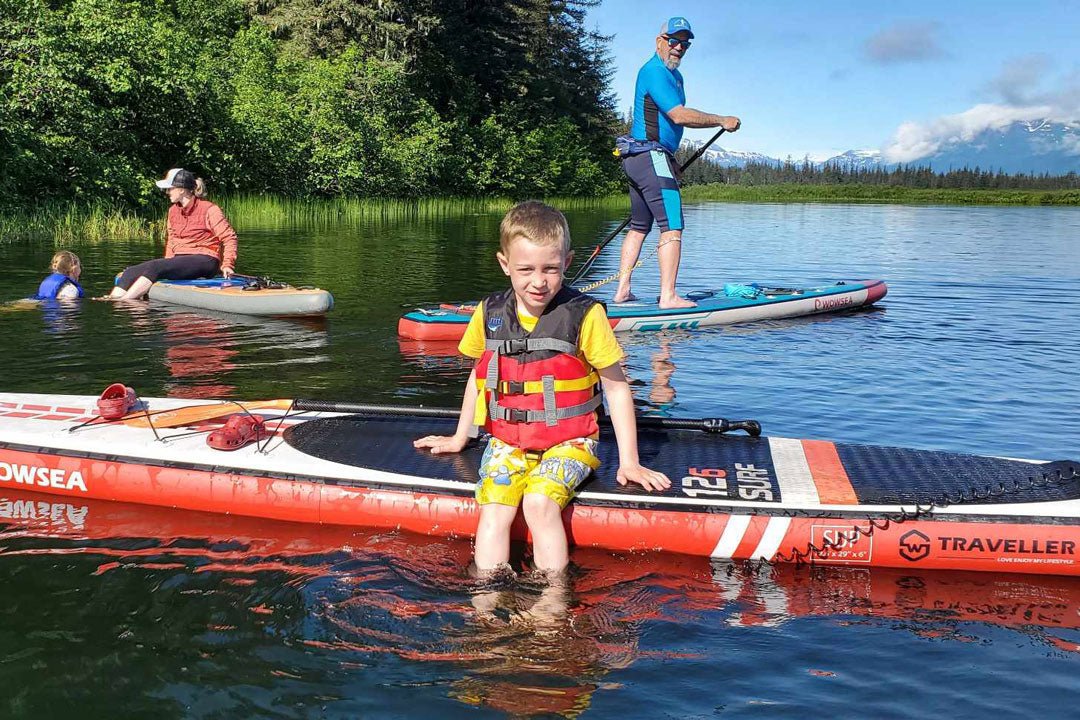
How to Paddleboard with a Group - Safety Tips
Paddleboarding is not only a fantastic individual activity but also an excellent choice for group outings. Whether you're planning a fun day out with friends, a family adventure, or team-building for a corporate group, paddleboarding offers numerous benefits when enjoyed together. It promotes social interaction, teamwork, and cooperation while providing an added sense of safety and motivation. Group paddleboarding also allows for shared exploration and discovery, creating memorable experiences and deepening the bonds within the group. So gather your friends, family, or colleagues, and embark on a group paddleboarding adventure that will create lasting memories and foster a sense of togetherness.
Next, let's spend a few chapters to talk about the factors that can be considered in detail.
1. Safety Tips for Paddleboarding with a Group:
When paddleboarding with a group, prioritizing safety is of utmost importance. Here are several key safety tips to ensure a safe and enjoyable experience for everyone involved:
- Assess Group Skill Levels:
Before embarking on a paddleboarding trip, assess the skill levels of all participants in the group. Ensure that everyone is comfortable and capable of handling the chosen paddleboarding route or conditions. Consider the least experienced paddlers in the group and plan the outing accordingly to ensure everyone's safety and enjoyment.
Implement a buddy system within the group. Pair up each participant with a buddy and encourage them to stay within sight and earshot of each other throughout the paddleboarding session. This ensures that everyone has someone to rely on and can promptly assist each other in case of any issues or emergencies.
Also, before heading out, discuss and develop a plan for emergencies, such as someone falling off a skateboard or getting separated. Designate someone to be responsible in case something unexpected happens.
- Wear Personal Flotation Devices (PFDs):
It is crucial for all participants to wear properly fitted personal flotation devices or life jackets. PFDs provide buoyancy and can be lifesaving in case of an accidental fall or other emergencies. Ensure that the PFDs are Coast Guard-approved and suitable for paddleboarding activities. At the same time, whistles can be used to attract attention or signal for help in case of an emergency.

- Communicate and Signal:
Establish clear communication signals and hand gestures that everyone in the group understands. Use these signals to communicate essential messages such as stopping, changing direction, or alerting others to potential hazards. Regularly check in with your group members and maintain open lines of communication throughout the paddleboarding trip.
- Know Basic Rescue Techniques:
Familiarize yourself with basic paddleboard rescue techniques and how to assist someone in need. This includes knowing how to safely approach and assist a distressed paddler, how to help someone back onto their board, and how to tow a paddleboard to safety if necessary. Having these skills can make a significant difference in emergency situations.
- Stay Within Designated Areas:
Stick to designated paddleboarding areas or areas with safe and suitable conditions for your group's skill level. Avoid areas with heavy boat traffic or strong currents that may pose hazards. Familiarize yourself with local regulations and any restrictions or guidelines specific to the location you plan to paddle.
Stay vigilant and aware of your surroundings at all times. Keep an eye out for other watercraft, swimmers, or wildlife that may be in the vicinity. Maintain a safe distance from any potential hazards and respect the natural environment. Being aware and alert helps prevent accidents and ensures the safety of both the group and others sharing the water.
By following these safety tips, you can minimize risks and create a safe environment for your group paddleboarding adventure. Remember, safety should always be the top priority to ensure that everyone has a fun and memorable experience on the water.

2. Choosing the Right Location for Group Paddleboarding:
When planning a group paddleboarding outing, selecting the right location is crucial for a safe and enjoyable experience. Remember to communicate with your group members and consider their preferences and needs when choosing a location.
First, Consider the wind, currents, and waves. For beginners or less experienced paddlers, it is generally advisable to choose calm and protected waters, such as lakes or calm sections of rivers. More experienced paddlers may opt for locations with small waves or gentle currents for a bit of a challenge.
Second, Ensure that the chosen location is easily accessible for all members of the group. Consider factors such as proximity to parking areas, ease of entry and exit points, and the availability of amenities like restrooms or changing facilities. Of course, avoid areas with heavy boat traffic or strong currents that may pose risks to the group's safety.
Third, Paddleboarding in a visually appealing environment can enhance the overall experience for the group. Look for locations with stunning natural landscapes, wildlife sightings, or interesting landmarks that can add to the enjoyment of the outing. It's always a bonus when the backdrop is as beautiful as the activity itself.
Fourth, Look for locations with parking areas, restrooms, picnic areas, or nearby cafes or restaurants where you can relax and enjoy a post-paddle meal together. Having these amenities nearby can enhance the overall experience and make the outing more enjoyable for everyone.

At last, Familiarize yourself with any local regulations or restrictions that may apply to paddleboarding in the area. Some locations may have specific rules regarding paddleboarding, such as designated launch points or restricted areas. Adhering to these regulations ensures that you are respecting the local environment and maintaining a positive relationship with the community.
By taking these factors into account, you can select a paddleboarding spot that is safe, accessible, visually appealing, and suitable for the skill level and size of your group. Ultimately, choosing the right location sets the stage for a memorable and enjoyable group paddleboarding adventure.
To be continued~
Recent Articles
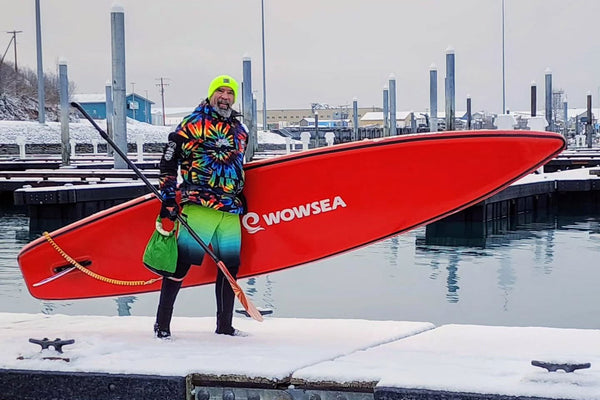
Tips for Keeping and Using Inflatable Paddle Boards in Winter
Let's talk about how to use and maintain inflatable stand-up paddleboards (SUPs) in winter. We’ll cover equipment checks, how to dress properly, choosing the right safety gear, and paddling techniques. With the right preparation and exploration, you can create unforgettable water adventure memories this winter!
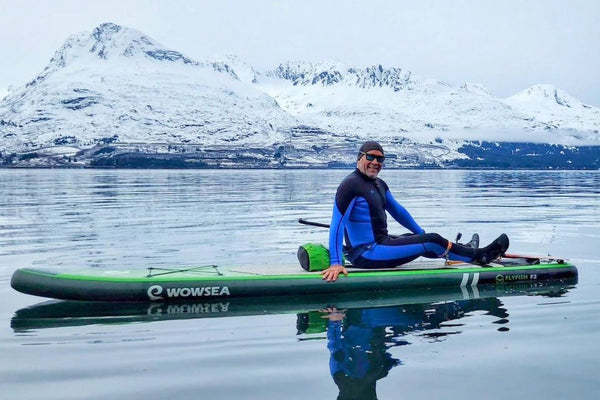
Cold Weather, Warm Spirits: Inflatable Paddle Boards' Winter Wonderland
By navigating icy waters on your inflatable board with a focus on safety, you can discover the profound silence and stark beauty of the winter waterways, all while keeping fitness levels high and spirits invigorated.

How to Incorporate Meditation into Your SUP boarding Routine
SUP boarding is not merely a recreational pursuit but a holistic journey—where the water becomes a canvas for meditation, and each stroke becomes a brushstroke in the masterpiece of mindful living.
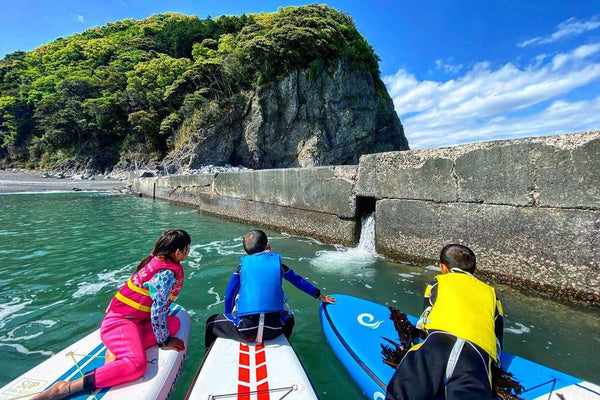
A Comprehensive Guide to Family Stand-Up Paddleboarding Adventures
From choosing the perfect board and accessories, overcoming challenges, and building confidence in young paddlers to capturing memories through photography and exploring family-friendly paddleboarding destinations, the WOWSEA SUP experience is rich with opportunities for bonding, learning, and creating cherished memories.
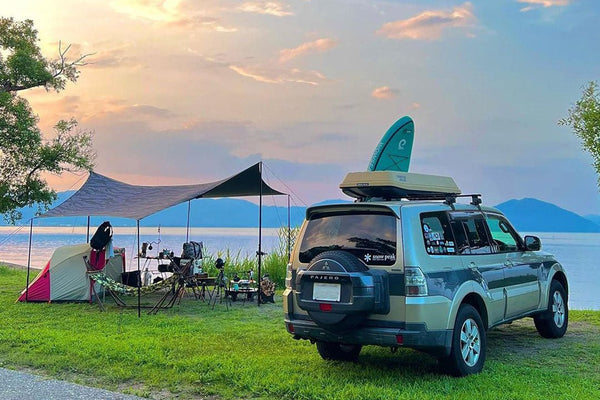
How to have an overnight Multi-Day SUP Trips and Camping (2)
The Complete Guide to Paddleboard Travel and Camping: Pack your gear, set up camp, and get ready to create lifelong memories on the water with WOWSEA SUP boards.
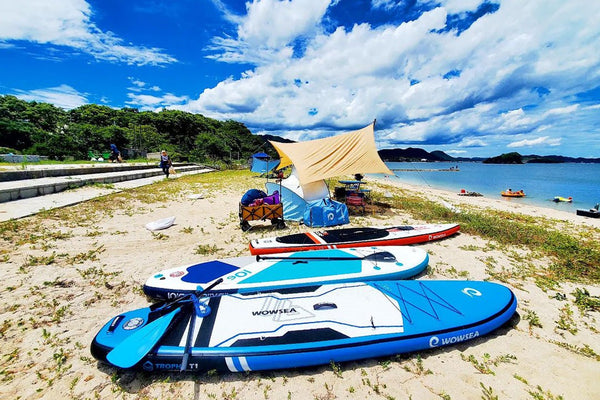
How to have an overnight Multi-Day SUP Trips and Camping (1)
The allure of multi-day trips and camping with SUP boards lies in the freedom to explore remote and untouched locations. This opens up a world of possibilities for adventurers who crave solitude, tranquility, and an intimate connection with nature.
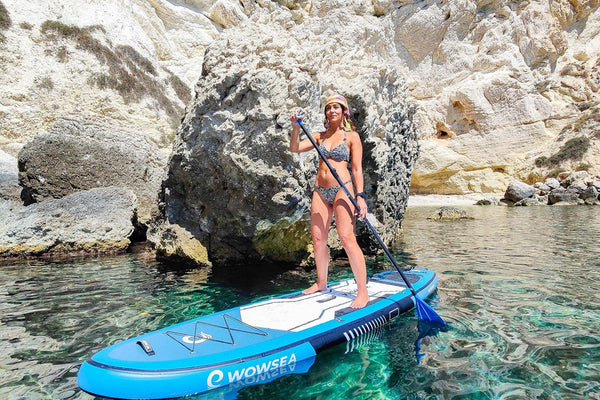
Exploring the Beauty of Nature with WOWSEA Inflatable Paddle Board: A Guide for Tourists
With the WOWSEA Inflatable Paddle Board, tourists can embark on unforgettable adventures and experience the beauty of nature in a whole new way.
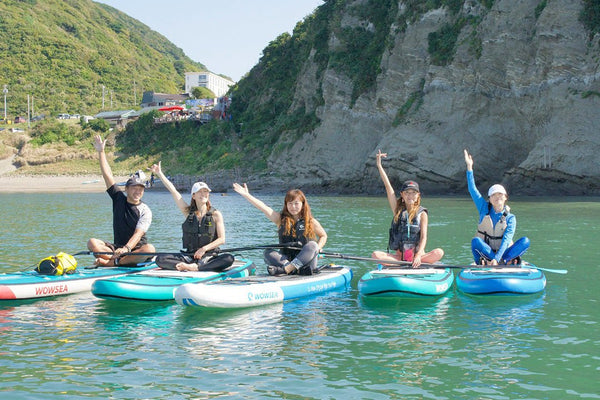
How to Paddleboard with a Group - Games and Activities
Group paddleboarding games and activities are a fantastic way to bond with others, have fun, and make the most of your time on the water. They provide opportunities for friendly competition, teamwork, and exploration, enhancing the overall experience of your paddleboarding adventure.

Share